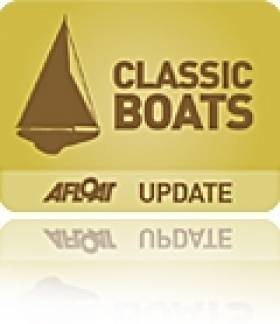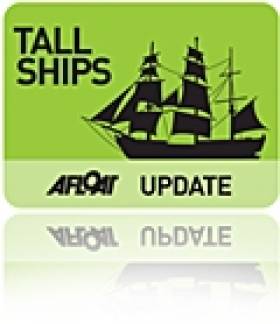Displaying items by tag: Pat Murphy
Asgard: The Story of The Most Famous Yacht in Irish History Told This Wednesday At Howth Yacht Club
#hyc – Howth Yacht Club's Pat Murphy presents the life of Asgard, this famous yacht in Irish history from her launch in 1905 to her current conservation in Collins Barracks Museum and the 100th commemoration in 2014. The venue for the special talk is Howth Yacht Club this Wednesday, 18th February at 20:00. The lecture is open to all inlcuding non–yacht club members.
'Asgard's' 23 day voyage to collect the guns and ammunition for the Irish Volunteers and their landing in Howth in July 1914 is described in detail with unique photographs. Also covered will be the landing of Conor O'Brien's 'Kelpie' in Kilcoole.
Donations, no matter how small, will be welcomed on the night for the Howth 17s Heritage Fund.
Murphy Takes Asgard Centenary Talk To Fingal For Heritage Week
#Asgard - Boating historian and round-the-world yachtsman Pat Murphy will once again give his centenary talk on the famous gun-running ship Asgard and its pivotal place in Irish history over the coming days for 2014's Heritage Week.
The series of free talks in north coastal Dublin begins tomorrow (Monday 25 August) at the public library in Rush, moving to Donabate/Portrane (Tuesday 26), Malahide (Wednesday 27) and Baldoyle (Thursday 28).
Each evening's presentation begins at 6.30pm and booking ahead is essential – contact Charlie Quinn at Fingal County Libraries at [email protected] or call 01 8708464 or 01 8708414.
Round–the–World Yachtsman Relates Bad Experience in Dunmore East
Further to your article on Dunmore East and its very unwelcoming attitude towards leisure craft let me relate a very bad experience we had there.
After nine years circumnavigating and having visited 39 countries and receiving a warm welcome in each my wife and I returned to Ireland by way of Dunmore East. Having crossed the Bay of Biscay we had planned to land in Kilmore Quay from where we had departed Ireland from. However due to a southerly gale and having hove-to for 4 hours during the night south of the Saltees we decided to divert to Dunmore East at first light, what a mistake.
We were well aware of the bad reputation of Dunmore East but after 100 hours at sea and with winds of over 30 knots we were very tired and decided for safety reasons to chance berthing there.
We rafted up with two other visiting yachts, they had also ran for shelter, and later in the morning when the Harbour Master walked down the Harbour he shouted at us making it VERY clear that we were not welcome, this despite the weather outside. Speaking to a neighbouring fisherman what we heard him say about us is not worth repeating, his language was disgraceful. We left the following morning.
Since returning the most popular question we are asked is "where is the nicest place you have been to" to which we reply "if we were to go around again there is no place we visited that we would avoid except Dunmore East". I think that sums it up.
Looking to the future, I have heard there is a new Harbour Master by the name of Harry McLoughlin and that he has already shown that he intends to make lovely Dunmore East a much more welcoming Harbour.
We wish him every success and all visiting leisure craft should show their appreciation by co-operating with him.
Looking forward to a return visit to Dunmore East.
Pat & Olivia Murphy































































